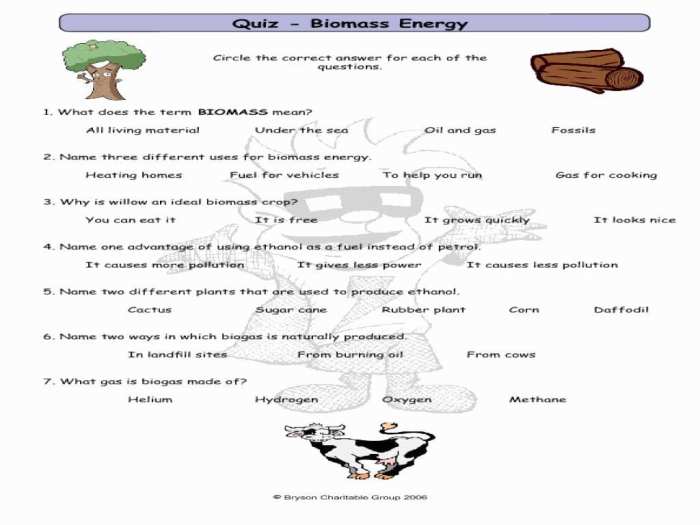Introducing the Bill Nye Garbage Worksheet Answer Key PDF, an indispensable resource for understanding the intricacies of garbage and waste management. This comprehensive guide delves into the key concepts, types of waste, disposal methods, environmental impact, and strategies for reducing garbage output, all presented with the engaging and informative style that Bill Nye is renowned for.
The worksheet provides a thorough overview of the subject, making it an ideal tool for educators, students, and anyone interested in waste management practices. With its clear explanations, practical examples, and thought-provoking insights, this guide empowers individuals to make informed decisions about waste disposal and contribute to a more sustainable future.
Bill Nye Garbage Worksheet Overview
The Bill Nye Garbage Worksheet is an educational resource designed to teach students about the importance of waste management. It is suitable for students in grades 5-8 and covers a wide range of topics related to garbage, including types of waste, disposal methods, and environmental impacts.
The worksheet includes activities, discussion questions, and experiments that help students understand the complex issue of garbage disposal. It encourages students to think critically about the choices they make and the impact those choices have on the environment.
Key Terms and Definitions: Bill Nye Garbage Worksheet Answer Key Pdf
Waste
Waste is any unwanted or discarded material. It can be solid, liquid, or gas, and can come from a variety of sources, including households, businesses, and industries.
Garbage
Garbage is a type of waste that is solid and typically consists of food scraps, paper, plastic, and other household items. It is usually collected and disposed of by local governments.
Landfill
A landfill is a site where waste is buried in the ground. Landfills are the most common method of garbage disposal in the United States, but they can also be a source of pollution if they are not properly managed.
Recycling
Recycling is the process of converting waste materials into new products. Recycling can help to reduce the amount of waste that is sent to landfills and can also conserve natural resources.
Types of Garbage and Waste
Biodegradable waste
Biodegradable waste is waste that can be broken down by natural processes, such as bacteria or fungi. Examples of biodegradable waste include food scraps, paper, and yard waste.
Non-biodegradable waste
Non-biodegradable waste is waste that cannot be broken down by natural processes. Examples of non-biodegradable waste include plastic, metal, and glass.
Hazardous waste
Hazardous waste is waste that contains harmful chemicals or materials. Examples of hazardous waste include batteries, paint, and cleaning products.
Garbage Disposal Methods
Landfilling
Landfilling is the most common method of garbage disposal in the United States. Landfills are sites where waste is buried in the ground. Landfills can be a source of pollution if they are not properly managed.
Incineration, Bill nye garbage worksheet answer key pdf
Incineration is the process of burning waste to reduce its volume and weight. Incineration can be a more environmentally friendly option than landfilling, but it can also produce air pollution.
Recycling
Recycling is the process of converting waste materials into new products. Recycling can help to reduce the amount of waste that is sent to landfills and can also conserve natural resources.
Composting
Composting is the process of breaking down organic waste, such as food scraps and yard waste, into a nutrient-rich soil amendment. Composting can be done at home or at commercial composting facilities.
Environmental Impact of Garbage
Air pollution
Garbage disposal can contribute to air pollution in a number of ways. Landfills can release methane, a greenhouse gas, into the atmosphere. Incineration can also release air pollutants, such as dioxins and furans.
Water pollution
Garbage disposal can also contribute to water pollution. Landfills can leach harmful chemicals into groundwater. Incineration can also release pollutants into the air, which can then be deposited on land or water.
Land pollution
Garbage disposal can also contribute to land pollution. Landfills can take up valuable land and can also be a source of litter. Incineration can also produce ash, which can be a hazardous waste.
Reducing Garbage Output

Reduce
The first step to reducing garbage output is to reduce the amount of waste that you generate. This can be done by buying less stuff, reusing items, and repairing items instead of throwing them away.
Reuse
Reusing items is a great way to reduce garbage output. This can be done by using reusable shopping bags, water bottles, and containers. You can also reuse items for other purposes, such as using old clothes as rags or using old jars as planters.
Recycle
Recycling is a great way to reduce garbage output. Recycling can help to conserve natural resources and can also reduce the amount of waste that is sent to landfills. You can recycle a variety of materials, including paper, plastic, metal, and glass.
Bill Nye’s Perspective on Garbage
Bill Nye is a science educator who has been a vocal advocate for environmental protection. He has spoken out about the importance of waste management and has encouraged people to reduce their garbage output.
Nye believes that we need to change the way we think about garbage. He says that we need to stop thinking of it as something that is dirty and disposable and start thinking of it as a valuable resource.
Nye’s perspective on garbage is a reminder that we all have a responsibility to protect the environment. We can do this by reducing our garbage output, recycling, and composting.
FAQ Guide
What is the purpose of the Bill Nye Garbage Worksheet?
The Bill Nye Garbage Worksheet aims to educate individuals about the importance of waste management, the different types of garbage, and the environmental impact of improper disposal.
What key concepts are covered in the worksheet?
The worksheet covers key concepts such as waste classification, disposal methods, recycling, composting, and the environmental consequences of waste mismanagement.
How can I use the worksheet to reduce garbage output?
The worksheet provides tips and strategies for reducing garbage output, including using reusable items, recycling, and composting.